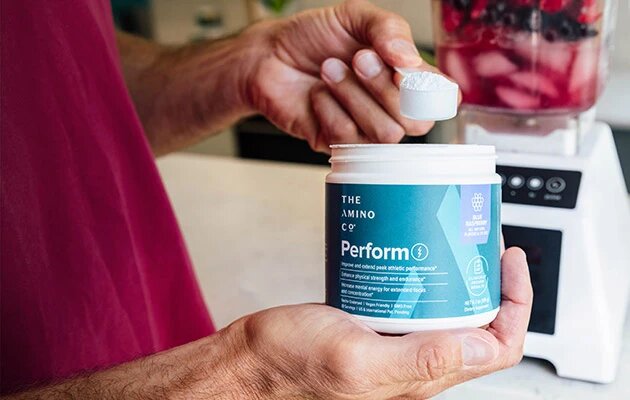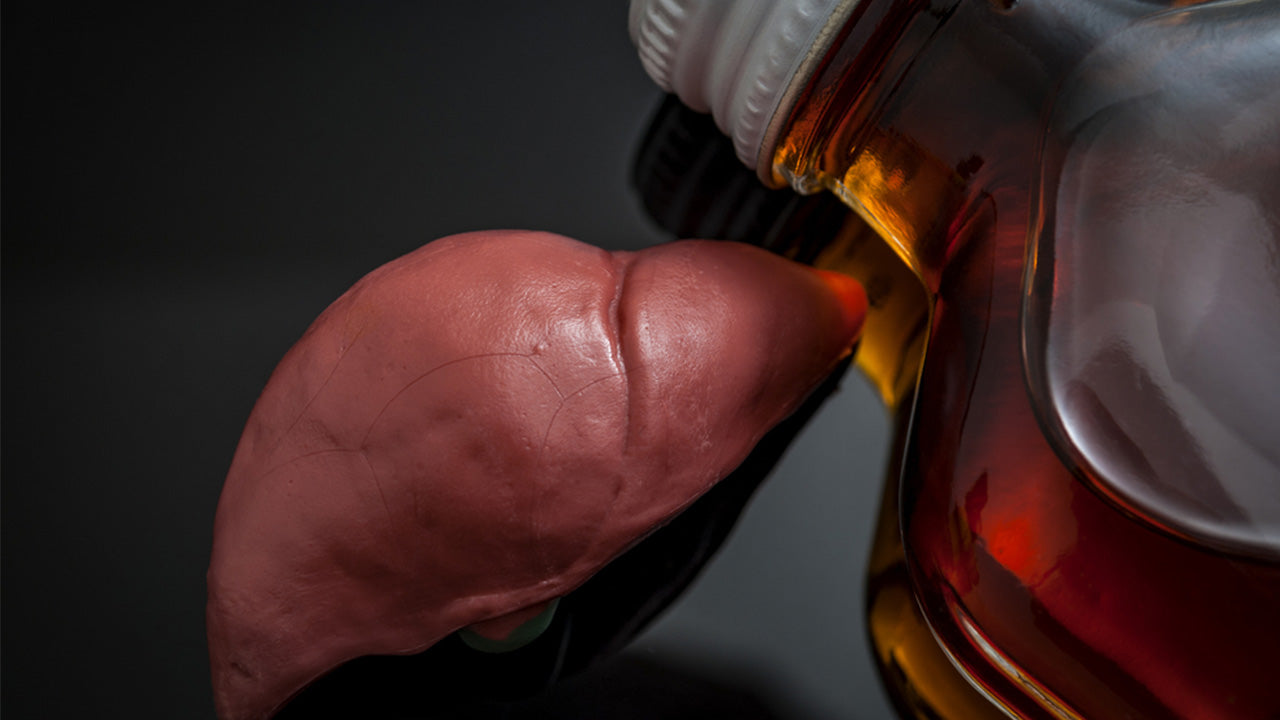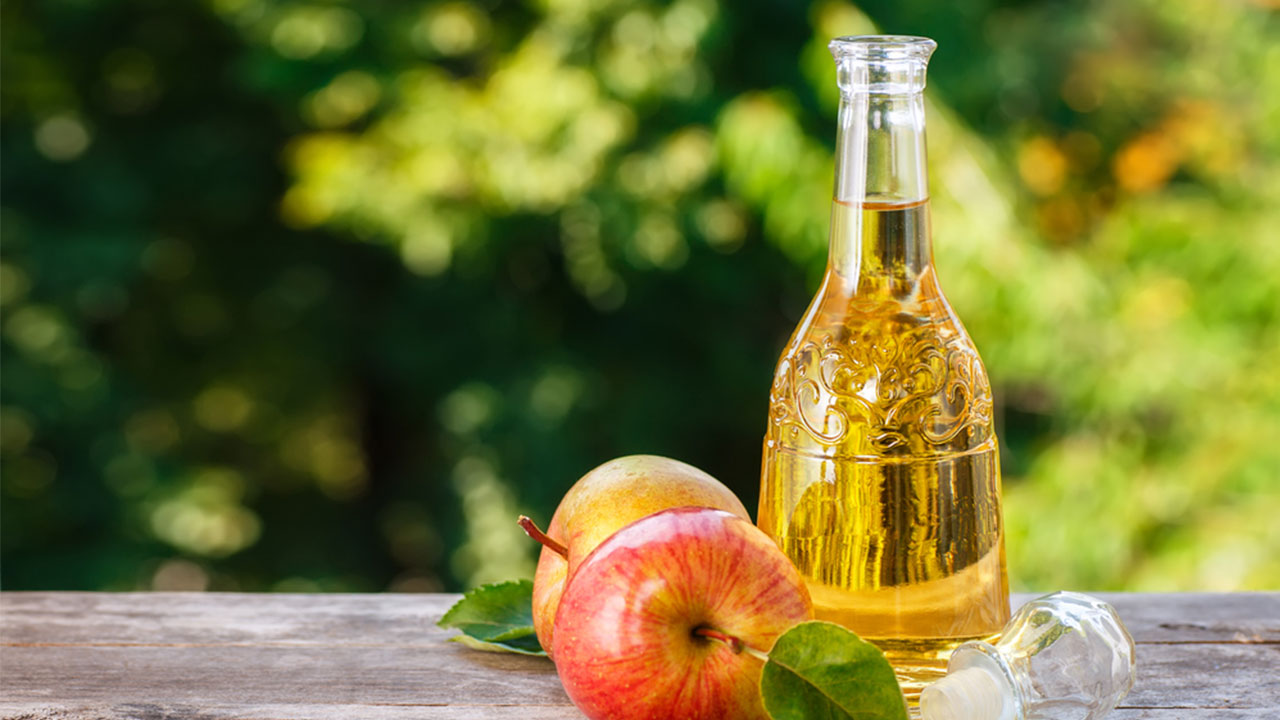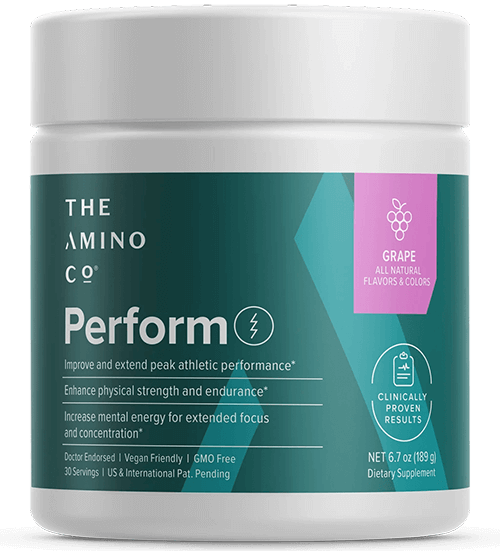The Liver: Your Body’s Central Processing Plant
 By: by Amino Science
By: by Amino Science

The liver is the largest internal organ in the body and is found only in vertebrates. Although it’s an organ that has an impressive list of duties—an estimated 500 according to most textbooks—many of us think of it only when we’ve had too much to drink or been exposed to certain toxic substances. But the liver works all day every day, detoxifying and purifying the body’s blood supply and acting as the primary site for nutrient processing and lipid, carbohydrate, and amino acid distribution.
So come with us as we explore the structure and many functions of the liver and what this amazingly important organ means for the rest of the body.
The Structure of the Liver
The liver is a reddish-brown solid organ that’s located in the upper right side of the abdominal cavity, just below the lungs, and is partially protected by the rib cage. The liver of an adult human weighs approximately 3 pounds, which makes it the second heaviest organ in the body, surpassed only by the skin (which is also considered the largest organ overall). The liver is also the only organ that receives blood from two sources:
- Hepatic artery
- Portal vein
The hepatic artery carries oxygen-rich blood from the heart, and the portal vein carries nutrient-rich blood from the intestines. These blood vessels further subdivide into capillaries that supply the two main lobes’ many smaller lobules. These functional units of the liver are, in turn, made up of millions of metabolic liver cells called hepatocytes.
Because of its role in filtering the body’s blood supply, the liver holds about a pint of blood at any given moment. After being processed, this blood is then passed out of the liver via the three hepatic veins.
How the Liver Functions
We’ve established that the liver is the largest internal organ in the body, but did you know it’s also the largest gland?
The liver is afforded the status of gland because it synthesizes and secretes substances that are used by the rest of the body. This means it has the ability to regulate the levels of most chemicals in the blood both directly and indirectly through the secretion of a number of important substances, including bile—a bitter alkaline fluid manufactured by the hepatocytes and stored and concentrated in the gallbladder. Bile not only aids in the elimination of certain byproducts of liver metabolism but also assists in the digestion and absorption of fats.
And this brings us to one of the most important functions of the liver—processing the food we eat.
The Liver and Food Processing
The foods we eat are basically combinations of macronutrients—the substances we require in relatively large amounts to survive—and the main macronutrients are generally considered carbohydrates, fats, and proteins. But other consumables, such as alcohol, are technically macronutrients too, in the sense that they contribute calories to the diet.
After food has gone through the digestive process, its nutrients are absorbed by the small intestine and sent to the “central processing plant” of the liver to be broken down, converted, stored, or repackaged for delivery to other tissues and organs based on the current needs of the body.
An easy way to illustrate this process may be to think of how an oil refinery works. First, crude oil is delivered to the refinery and sent through the processing stream, which yields whatever end products are most in demand by the current market—for example, gasoline, diesel fuel, and kerosene. Likewise, the liver senses which nutrients are needed by various tissues and organs and delivers the building blocks required to meet the body’s demands.
In the case of fats, the bile produced by the liver is pushed by the gallbladder into tubes called bile ducts. These ducts carry the bile to the small intestine, where it mixes with the fats in food to aid in their digestion and promote their absorption by the gastrointestinal tract.
One of these fats, triglycerides, which is found in the blood and can cause fatty liver if allowed to build up to excessive levels, is metabolized in the liver to produce energy for its (the liver's) own use. And the metabolites, or breakdown products, are then transported out to the blood for delivery to the body’s various tissues.
As for the carbohydrates, after they’re broken down into their simplest form—the monosaccharides glucose, fructose, and galactose—and the fructose and galactose are converted into glucose, their fate depends on the liver to store or use glucose as needed.
It’s vitally important to maintain blood glucose levels within a very narrow range, and the liver does a precise job of this by taking up excess glucose after a meal and storing it as glycogen. And when blood glucose levels drop, the liver senses the change and releases glucose back into the blood.
The Liver and Amino Acids
The liver is also responsible for the regulation of blood levels of amino acids, and is the place where amino acids from protein digestion get sorted and transformed. This process is carried out by enzymes called deaminases and transaminases. These enzymes can either add nitrogen to molecules to synthesize nonessential amino acids or remove nitrogen to leave carbon structures that can then be used to make glucose or—less readily—be converted to fatty acids.
The liver also converts the ammonia that’s generated by the release of nitrogen from some of these reactions into urea—a process that allows what was a toxic byproduct (ammonia) to be safely excreted in the urine.
In addition, the liver produces a number of proteins, including albumin and fibrinogen—two major plasma proteins (proteins present in blood plasma) that circulate through the body. Albumin serves to regulate blood volume and may also be a means of transporting essential amino acids to other tissues. Fibrinogen is an important component of the blood clotting process. The levels of these plasma proteins, and the liver’s capacity to produce them, are affected by overall nutrition and excessive use of alcohol or other drugs.
The Liver and Its Many (Other) Roles
As stated earlier, the liver is responsible for about 500 known tasks, some of which have already been discussed. But there are so many more—too many to possibly cover here. Still, the liver is such an important organ we thought we’d show it the respect it deserves and talk about a few more of its better known functions.
- Vitamin and mineral storage: The liver stores vitamins A, D, E, K, and B12—some for months, and even years. It also stores iron and copper and is the main organ responsible for the recycling of iron and the removal of old red blood cells.
- Detoxification: Anything that enters the body, whether it’s via the mouth, skin, or lungs, gets filtered by the liver. If the liver decides something’s a nutrient, it gets sent to the bloodstream, while substances deemed to be toxins or waste are excreted with the help of bile.
- Hormone regulation: The liver regulates the balance of sex, thyroid, and adrenal hormones, breaking down and removing excess levels from the body.
- Immune system support: The liver helps fight infections by making immune factors and removing bacteria from the bloodstream.

Diseases of the Liver
The liver has a lot of amazing abilities, not the least of which is its remarkable powers of regeneration. In fact, the liver can become whole again even if as little as 25% of the liver tissue remains. While this is a truly astounding feat no other internal organ can duplicate, the liver isn’t invincible. Indeed, there are a number of conditions that can affect the liver’s capacity to perform its myriad functions. These include:
- Viral hepatitis: The hepatitis A, B, C, D, and E viruses all cause liver damage. However, hepatitis A and E typically result in acute infections, while hepatitis B, C, and D can lead to both liver failure and liver cancer.
- Autoimmune hepatitis: Sometimes the body’s immune system mistakenly attacks the liver, leading to inflammation and liver damage.
- Non-alcoholic fatty liver disease: As mentioned earlier, excess levels of triglycerides can lead to a fatty liver, or non-alcoholic fatty liver disease, which is liver disease that’s caused by the buildup of too much fat in the liver.
- Primary sclerosing cholangitis: In people with primary sclerosing cholangitis, inflammation occurs within the bile ducts, which leads to scar tissue and hardened, narrowed ducts. Over time, this can result in serious liver damage and require liver transplantation.
- Primary biliary cholangitis: This condition, which was previously known as primary biliary cirrhosis, leads to the gradual destruction of the bile ducts. If the damage is extensive enough, bile can back up in the liver and cause cirrhosis.

Keeping the Liver Healthy
As we’ve seen, the liver performs many important functions that help keep the body running smoothly. But certain conditions can compromise its ability to function. However, there are a few things you can do to help prevent these liver problems and ensure a lifetime of tireless service. These include:
- Eat a healthy diet. A diet that includes lots of fruits, vegetables, whole grains, nuts, seeds, fish, and healthy oils like olive oil and limits the amount of red meat and dairy products can keep the liver healthy and going strong. Likewise, processed and refined foods should be kept to a bare minimum, as these types of foods are associated with obesity and fatty liver disease.
- Exercise regularly. Regular exercise helps lower triglycerides and boost levels of high-density lipoprotein (HDL)—the so-called good cholesterol—which can reduce the amount of fat in the liver.
- Limit exposure to toxins. Because the liver is responsible for processing every toxin that enters the body, excessive exposure can injure liver cells. Try to limit direct contact with chemicals that may be found in products such as paints, cleaning supplies, aerosols, herbicides, and pesticides.
- Drink in moderation. Too much alcohol can lead to liver damage, so aim for no more than one drink per day for women and two drinks per day for men.
- Avoid potential contamination. Viruses that damage the liver, such as hepatitis C, are spread through body fluids, so never share needles or personal hygiene items and always use condoms or dental dams during sex.
- Take amino acid supplements. Essential amino acids have been proven to help prevent the accumulation of fat in the liver and support overall liver health.
- Use medications wisely. Some medications, like acetaminophen, are well known for their ability to cause liver damage. However, medications that are relatively harmless in isolation may become toxic in combination with others. Educate yourself or speak with your health care provider before mixing medications with either other medications or alcohol—or even herbal supplements.
From filtering the blood and neutralizing toxins to processing food and regulating hormones, the liver is truly one of the wonders of nature. And by following a few simple guidelines, you can go a long way toward ensuring the body’s central processing plant remains up and running for many years to come.

Up to 25% off Amino
Shop NowTAGS: liver
Join the Community
Comments (0)
Most Craveable Recipes




 833-264-6620
833-264-6620



















